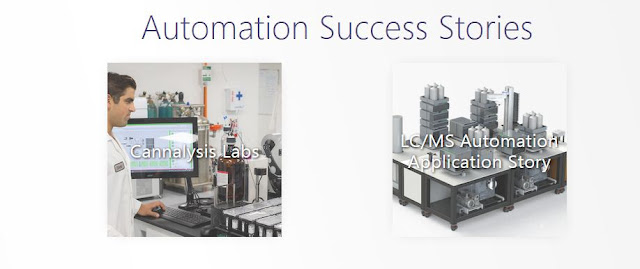HOW HIGH-PERFORMANCE LIQUID CHROMATOGRAPHY WORKS
High-Performance Liquid Chromatography (HPLC) is a logical
system used to separate identity, recognize, and evaluate components in a
liquid solvent.
Overview
HPLC siphons sample mixture in a solvent at high
pressure in and out of a column with chromatographic packing material. The strength
improves the procedure's speed making it faster in this way; it allows the use
of smaller particles for the column packing materials. The packing material is
what is referred to as a stationary stage. Smaller particles have a colossal
surface zone, therefore reassuring better interaction in the middle of the
stationary stage and the atoms spilling past it. Such a technique will affect a
superior division of the segments of the blend.
The components of the blend are isolated from one
another because of their distinctive level of interaction with the absorbent
particles. A detector has to be used to mix groups as they elute from the HPLC
column. It is because most compounds have no color, thus hard to see using the naked
eye. At the mobile phase, detectors can exit or even be sent to waste or gathered
as wanted. Contrasted with column chromatography, HPLC is exceptionally
automated and very sensitive.
Types
of HPLC
There is a pair of basic variations; normal-phase
and reversed-phased HPLC.
NOTE: reversed-phase HPLC is the most usually
utilized sort of HPLC.
Ordinary-phase
HPLC
It is similar to column chromatography. The segment
is stacked up with small silica traces, and a non-polar solvent such as hexane.
A standard section has an inside broadness of 4.6 Millimeters or less, and a
length of about 150 to 250 Millimeters. Then on-polar composite in the blend
will pass more rapidly through the column, as polar mixes will hold longer to
the polar silica than non-polar mixes will.
Back-pedal-phase
HPLC
The column is loaded up with silica particles, which
are adjusted to make them non-polar. It’s finished by adding long hydrocarbon
bonds to its side. A polar dissolvable, for example, water and methanol are
utilized.
It will result in a robust captivation between the
polar dissolvable and polar atoms in the mix being gone through the section all
the more quickly. Due to less allurement between the hydrocarbons ties attached
to silica and polar particles in the arrangement, polar particles in the blend
takes more time to move with the so lotion.
Van der Waals dispersion forces prompt forming of
attraction between non-polar compounds and hydrocarbons groups. Because of this,
they are less dissolvable as a result of the need to break chemical bonds as
they pass in the middle of the water or methanol atoms. It will cause the
non-polar molecules to be slowed down on their way into and out of a section and
take additional time. Accordingly, polar atoms will go in and out of a section
all the more rapidly.
Application
of HPLC
HPLC is typically utilized in different industries
and scientific applications such as pharmaceuticals, forensic analysis,
chemical industries, and also environmental research.
Essential
Tools for HPLC System
Solvent reservoir/ multiple reservoir
Detector
Injector Framework
High-Pressure pump
HPLC tube
| For more information click here |




Comments
Post a Comment